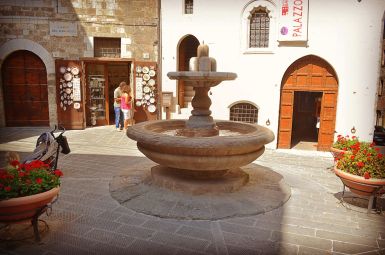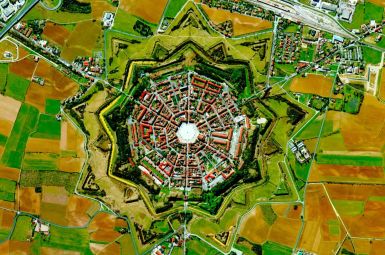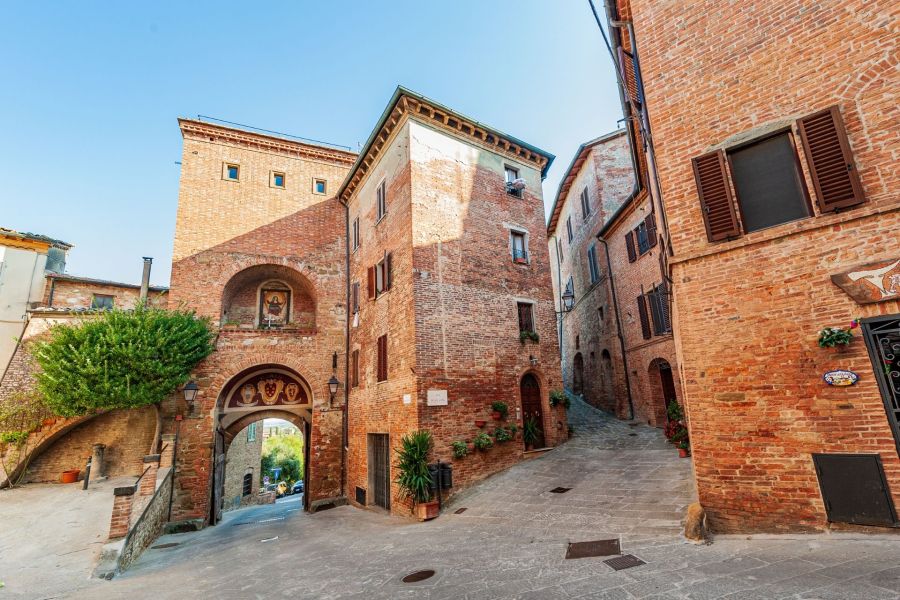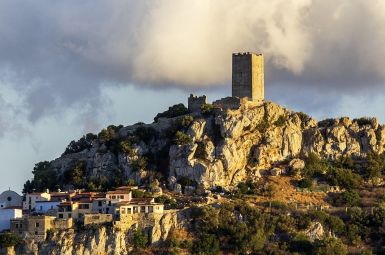
San Gimignano
Il Borgo di San Gimignano
Lo Skyline di Potere: La Manhattan del Medioevo
San Gimignano è universalmente riconosciuta come la “Manhattan del Medioevo“. Un appellativo non casuale: in epoca comunale, l’altezza di una torre simboleggiava il potere e la ricchezza della famiglia che l’aveva costruita. Dalle originali 72, oggi ne restano 14 spettacolari e intatte, che offrono uno skyline unico al mondo, testimonianza visiva di un passato di fasto economico e competizione tra i ceti più abbienti.Patrimonio Mondiale UNESCO
Dal 1990, il Centro Storico di San Gimignano è iscritto nella Lista del Patrimonio Mondiale UNESCO con una motivazione che ne sottolinea l’Eccezionale Valore Universale:Capolavoro del genio creativo umano, porta la testimonianza unica di una civiltà del passato e l’eccezionale esempio di un complesso architettonico e paesaggistico.Passeggiare tra Piazza della Cisterna e Piazza del Duomo significa immergersi in un impianto urbano rimasto pressoché immutato, un affresco tridimensionale della vita cittadina del XIV secolo, arricchito dai magnifici cicli di affreschi di maestri come Domenico Ghirlandaio e Benozzo Gozzoli.
Il Crocevia della Storia e del Gusto
La fortuna di San Gimignano è indissolubilmente legata alla Via Francigena, l’antica arteria che nel Medioevo incrociava il borgo, portando con sé mercanti, pellegrini e un flusso costante di ricchezza e culture. Questa posizione strategica ha influenzato anche l’eccellenza dei suoi prodotti:- Zafferano di San Gimignano DOP: Chiamato l’“Oro Rosso”, era una risorsa commerciale preziosissima nel Medioevo. Ricavato dagli stimmi essiccati del Crocus sativus, vanta un potere colorante, un profumo e un aroma di purezza e intensità ineguagliabili. Ancora oggi, la sua raccolta e lavorazione sono eseguite manualmente.
- Vernaccia di San Gimignano DOCG: Il vino bianco più famoso della Toscana. Prodotto esclusivamente nel territorio comunale, è un bianco DOCG (il primo della Toscana) fresco e avvolgente, noto fin dal Duecento per la sua eleganza. Si abbina perfettamente ai piatti arricchiti con lo zafferano locale.
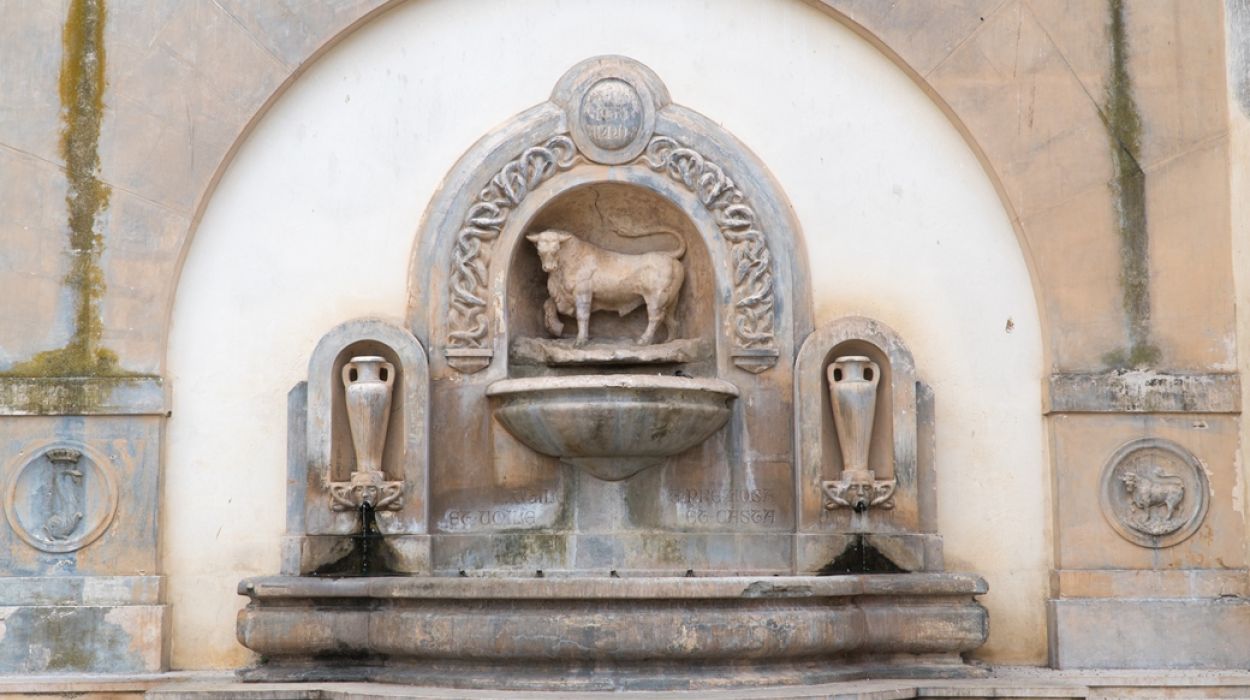
Il Borgo d’Italia
tutto da scoprire ed esplorare
Monumenti
Il Labirinto Verticale: I Monumenti di San Gimignano, Tracce Eterne di un’Epoca d’Oro
San Gimignano, Patrimonio UNESCO, non è solo una città, ma un’opera d’arte a cielo aperto. I suoi monumenti sono i capitoli di un libro di storia che narra di splendore medievale, di ambizioni di potere e di una fede profonda. Qui, l’architettura non è muta, ma parla attraverso i secoli.
La Verticalità del Potere: Le Torri Simbolo
L’elemento più iconico e distintivo sono le sue torri. In origine se ne contavano ben 72: erano il simbolo della ricchezza e della supremazia delle famiglie mercantili e nobiliari. Oggi, le 14 torri intatte che disegnano lo skyline sono la più vivida testimonianza della “Manhattan del Medioevo”.
Torre Grossa: L’Apice del Borgo
Dominante su Piazza del Duomo, la Torre Grossa, con i suoi 54 metri, è la più alta di San Gimignano. Iniziata nel 1300, pochi mesi dopo il passaggio di Dante Alighieri in città, fu completata nel 1311.
- Il Significato: Non solo un punto di osservazione, ma l’espressione massima del potere civico del Palazzo Comunale (o Palazzo del Popolo), al quale è annessa.
- L’Esperienza: Salire i suoi 218 scalini è un rito. La cima regala un panorama mozzafiato e senza pari sul centro storico e sull’infinito paesaggio della campagna senese. È l’unico punto che permette di abbracciare con lo sguardo l’intera valle, un meritato premio dopo la salita.
Il Centro Sacro e Civico: Piazza del Duomo
Piazza del Duomo è il cuore pulsante e monumentale, incorniciato dagli edifici che rappresentano i due poteri medievali: quello religioso e quello laico.
La Collegiata di Santa Maria Assunta (Il Duomo)
Dall’esterno, la facciata romanica del XII secolo si presenta con una sobria eleganza. Ma è all’interno che la Collegiata rivela la sua inattesa magnificenza, con un ciclo di affreschi di rara completezza e splendore.
- Capolavori Dipinti: Le sue pareti sono interamente affrescate, fungendo da “Biblia pauperum” per i fedeli. Ammirate il monumentale Giudizio Universale di Taddeo di Bartolo sulla controfacciata, e i cicli con le Storie del Vecchio e Nuovo Testamento realizzati da Bartolo di Fredi e da Lippo Memmi e bottega.
- La Cappella di Santa Fina: Custodisce uno dei tesori più emozionanti: gli affreschi con le Storie di Santa Fina di Domenico Ghirlandaio. Un capolavoro del Rinascimento che celebra la santa patrona in un’ambientazione carica di delicatezza e luce.
Palazzo Comunale (o del Popolo)
Simbolo del potere politico e oggi sede del Municipio e dei Musei Civici, il Palazzo Comunale è un’architettura che incarna la ricchezza comunale.
- La Sala di Dante: Così chiamata in onore della presenza del Sommo Poeta nel 1300, qui è conservata la Pinacoteca con opere di grandi maestri come Filippino Lippi, Pinturicchio e Coppo di Marcovaldo. L’ingresso al Palazzo è anche il punto d’accesso per la salita alla Torre Grossa.
Gli Angoli della Storia e della Contemplazione
Piazza della Cisterna
Di forma triangolare e leggermente in declivio, è considerata una delle piazze più belle d’Italia. Il suo nome deriva dal pozzo in travertino del 1287 che si trova al centro, punto focale della vita sociale e commerciale. La piazza è circondata dalle case-torri di famiglie influenti, come quelle degli Ardinghelli e dei Becci, che con le loro facciate gotiche narrano la prosperità mercantile.
Rocca di Montestaffoli
Posta sul punto più alto del borgo, la Rocca è un’antica fortificazione di cui oggi restano i ruderi e parte delle mura.
- Visione Panoramica: Trasformata in parco pubblico, offre un punto di vista privilegiato e più rilassato per contemplare il profilo cittadino e le colline coltivate a ulivi e viti, la culla della Vernaccia. Un luogo di quiete dove la storia si fonde con la bellezza del paesaggio toscano.
San Gimignano è una sinfonia di pietra, arte e luce: ogni monumento è una nota essenziale in questo spartito di eccezionale valore storico e artistico.
Curiosità
San Gimignano: Curiosità e Fascino di un Borgo Fuori dal Tempo
San Gimignano non è solo un gioiello toscano Patrimonio UNESCO; è un luogo intriso di storie, misteri e singolarità che la rendono unica al mondo. Ecco una selezione delle curiosità che ne alimentano il mito, presentate con la precisione di un copyright professionale.
La Vertigine delle Torri: Simbolo di Ambizione
Il tratto distintivo di San Gimignano, il suo celebre skyline, è frutto di una vera e propria competizione socio-economica che le è valsa il soprannome di “Manhattan del Medioevo“.
- La Legge del Limite: Contrariamente a quanto si potrebbe pensare, la costruzione di torri sempre più alte fu a un certo punto limitata per legge. Un decreto del 1255 stabilì che nessuna torre privata potesse superare l’altezza della Torre Rognosa (51 metri), annessa al Palazzo del Podestà. Questa legge fu infranta dai ricchissimi mercanti Salvucci, che costruirono le loro Torri Gemelle appena un po’ più alte, in un atto di sfida evidente al potere comunale.
- La Torre ‘Grossa’ e Dante: L’unica torre a superare il limite imposto fu la Torre Grossa (54 metri), simbolo del potere del Comune e unica visitabile oggi. La sua costruzione iniziò nel 1300, lo stesso anno in cui Dante Alighieri visitò San Gimignano come ambasciatore della Lega Guelfa in Toscana.
- Abitazioni Verticali: Le torri non erano solo uno status symbol. Erano vere e proprie case-fortezza. Per motivi di sicurezza e aerazione, le cucine erano spesso situate ai piani più alti, minimizzando il rischio di incendi per i piani inferiori e fornendo una via di fuga rapida in caso di pericolo.
Eredità della Francigena e Tesori Nascosti
La posizione strategica di San Gimignano lungo l’antica Via Francigena ha plasmato la sua storia, arricchendola di leggende e di prodotti d’eccellenza.
- Il Nome del Santo: Il nome della città è legato a una leggenda del V secolo. Si narra che il Vescovo Gimignano di Modena apparve miracolosamente sulle mura per difendere il borgo dall’assalto di Attila, re degli Unni, o secondo altre fonti, di Totila, re degli Ostrogoti. In segno di gratitudine, il borgo cambiò il suo nome da Silvia a San Gimignano.
- Lo Zafferano, Moneta Medievale: Lo Zafferano di San Gimignano DOP non era solo una spezia, ma un vero e proprio strumento di scambio e ricchezza nel Medioevo. Soprannominato l’“oro rosso”, il suo commercio era così fiorente che nel 1228, il Comune lo utilizzò per pagare i mercenari e lanciare la campagna contro Siena. La qualità del prodotto è tale che ancora oggi la sua lavorazione (dalla raccolta alla tostatura degli stimmi) è interamente artigianale, un’eredità di quel tempo.
- La Nascita della Vernaccia: San Gimignano vanta il primato di aver prodotto il primo vino bianco italiano a ricevere la denominazione DOCG: la Vernaccia di San Gimignano. Già nel 1276 si trovano documenti che ne attestano la commercializzazione. Questo vino, dalla sua acidità e freschezza distintive, era noto e apprezzato anche da personaggi illustri come Michelangelo Buonarroti, che ne lodò la qualità.
Meraviglie Artistiche e Mistiche
I monumenti cittadini custodiscono narrazioni che vanno oltre la semplice storia dell’arte.
- Le Violette di Santa Fina: All’interno della Collegiata, la Cappella di Santa Fina (affrescata dal Ghirlandaio) celebra la giovane patrona locale. La leggenda vuole che Fina, dopo una vita di sofferenze, sia morta su una tavola di legno. Al momento del trapasso, tutt’intorno, sbocciarono delle violette gialle. Ancora oggi, nel giorno della sua festa (12 marzo), le mura di San Gimignano vengono onorate con questi fiori, noti localmente come le “violette di Santa Fina”.
- Il Pozzo del Mistero in Piazza della Cisterna: La piazza, con la sua caratteristica forma triangolare, è dominata da un pozzo centrale del 1273. Si narra che gettare una moneta nelle sue acque non solo assicuri un ritorno a San Gimignano, ma che le monete restanti siano state nascoste in un punto segreto del pozzo, alimentando il fascino del mistero.
Personaggi
L’Anima Storica: I Grandi Nativi di San Gimignano che Hanno Forgiato il Mito
San Gimignano, pur essendo un borgo di dimensioni contenute, è stata una culla feconda per personalità che hanno lasciato un segno indelebile nella storia, nell’arte e nella fede. Questi nativi non hanno solo vissuto qui, ma hanno reso eterna la città attraverso le loro opere e la loro vita, trasformando le sue pietre in leggenda.
La Musa Ispiratrice: Santa Fina
Nessun nome è più intimamente legato all’identità di San Gimignano di quello di Santa Fina dei Ciardi (1238-1253). Nonostante la sua breve vita e la malattia che la immobilizzò giovanissima su una tavola di legno, divenne un simbolo di fede e resilienza.
- Patrona e Culto: Il culto di Santa Fina si diffuse immediatamente dopo la sua morte, quando si narra che sbocciarono miracolosamente delle violette gialle sulla sua tavola e sulle mura della città. Dichiarata Patrona, in suo onore fu eretta la magnifica Cappella di Santa Fina all’interno della Collegiata, affrescata da Domenico Ghirlandaio (sebbene Ghirlandaio non fosse nativo, il suo lavoro è un omaggio eterno alla Santa locale).
- Impatto Culturale: La sua storia è stata tramandata dal domenicano Giovanni da San Gimignano (n. 1260-1270 circa), un altro illustre nativo che, su commissione, scrisse la celebre Legenda di S. Fina, rendendo la sua figura immortale ben oltre i confini del borgo.
Il Poeta dell’Amor Cortese: Folgóre da San Gimignano
Nel fervore del Duecento, emerse una voce poetica di spicco, Folgóre da San Gimignano (nato all’inizio del 1200). Considerato uno dei maggiori esponenti della poesia cortese e comico-realistica toscana, la sua opera fornisce uno spaccato unico della vita medievale.
- Le Corone: È noto soprattutto per le sue Corone (sonetti dedicati ai dodici mesi e ai sette giorni della settimana), che dipingono con leggerezza e maestria un affresco della vita nobiliare, delle feste, dei banchetti e dei piaceri mondani tipici della ricca società guelfa. Le sue liriche offrono una preziosa testimonianza degli usi e costumi della San Gimignano del XIII secolo.
L’Ombra del Pallasco: Sebastiano Mainardi
Nel Rinascimento, la città contribuì al fiorire dell’arte fiorentina attraverso figure come Sebastiano Mainardi (n. 1460 circa), cognato e allievo del più celebre Domenico Ghirlandaio.
- Erede e Collaboratore: Sebastiano lavorò a stretto contatto con Ghirlandaio, partecipando a importanti cicli decorativi, inclusi quelli a San Gimignano. Molti dei suoi lavori originali, come la Madonna col Bambino e Santi custodita nel Palazzo Comunale, sono oggi testimonianza della sua fine pennellata e del suo stile in equilibrio tra la lezione del maestro e una propria delicatezza espressiva.
Artisti che Hanno Eletto la Città a Loro Patria Spirituale
Sebbene non nativi, è impossibile non menzionare artisti che hanno scelto San Gimignano come il loro epicentro creativo, dedicando le loro opere più significative al borgo:
- Benozzo Gozzoli (fiorentino, sec. XV) – Rimase a San Gimignano per anni, trasformando la Chiesa di Sant’Agostino con il monumentale ciclo delle Storie di Sant’Agostino e lasciando due affreschi di San Sebastiano, invocato contro la peste, nella Collegiata e nella Chiesa di Sant’Agostino. La sua opera è un vero e proprio “libro a figure” del Rinascimento.
- Lippo Memmi e Taddeo di Bartolo (senesi) – Hanno affrescato la Collegiata, garantendo alla città un eccezionale catalogo della Scuola Senese, un tesoro che rivaleggia con i capolavori fiorentini e ne cementa l’importanza nel panorama artistico italiano.
Ricette Tipiche
La Cucina delle Torri: I Sapori Nobili di San Gimignano
La gastronomia di San Gimignano è la perfetta sintesi tra la rustica e schietta cucina toscana e la sofisticazione data dai suoi prodotti d’eccellenza. Al centro di questa tavola regna incontrastato l’oro rosso medievale: lo Zafferano DOP, che conferisce a molti piatti il suo inconfondibile aroma e un colore regale.
I Primi: Tradizione e Ricchezza Aromatizzata
La pasta fresca e le zuppe raccontano l’anima contadina del borgo, ma il tocco prezioso dello zafferano le eleva a un livello di raffinatezza storica.
1. I Pici allo Zafferano (e Zucchine)
I Pici sono il formato di pasta tipico della tradizione senese: spaghettoni spessi, tirati rigorosamente a mano e realizzati con acqua e farina, a testimonianza della semplicità degli ingredienti locali.
- Il Tocco Locale: A San Gimignano, i pici vengono spesso impreziositi dallo Zafferano DOP locale, che tinge il piatto di un giallo intenso e dona un profumo persistente e delicato.
- La Ricetta Classica: Sebbene spesso accompagnati da ragù di cacciagione, la versione più tipica e pura li vede conditi con l’oro rosso, olio extra vergine d’oliva locale e, talvolta, arricchiti con zucchine o pinoli tostati, per un primo che bilancia la rusticità della pasta con l’eleganza della spezia.
2. Pici al Ragù di Cinghiale
La selvaggina è da sempre un pilastro della tavola toscana, e il Cinghiale è la carne più rappresentativa dei boschi che circondano San Gimignano.
- Rusticità Profonda: Questo piatto abbina i robusti pici a un ragù di cinghiale cotto per ore, a fuoco lento. La carne viene marinata nel vino rosso (spesso Chianti), con spezie e aromi, per garantire una morbidezza e un sapore intenso, il perfetto comfort food delle serate fredde.
I Secondi: Cacciagione e Il Vanto Enologico
I piatti di carne esaltano il legame con la campagna e trovano nella Vernaccia il loro alleato ideale.
3. Cinghiale alla Vernaccia
Questo è forse il piatto che più incarna il terroir di San Gimignano, unendo i due prodotti più celebri della città: la selvaggina e il vino.
- L’Abbinamento Perfetto: Il cinghiale, tagliato a spezzatino, viene cotto in umido, a lungo, con un soffritto di verdure e sfumato generosamente con la Vernaccia di San Gimignano DOCG. Il vino bianco, secco e sapido, conferisce alla carne un aroma unico, bilanciando il sapore forte della selvaggina e creando una salsa succulenta, perfetta per essere accompagnata dalla polenta o da pane toscano non salato.
- Variazioni sullo Zafferano: Non mancano variazioni come lo Spezzatino di Maiale o il Coniglio in umido, anch’essi cucinati con l’aggiunta di zafferano, che offre un’alternativa più delicata ma ugualmente ricca.
I Tesori Liquidi e Da Tagliere
La degustazione a San Gimignano inizia ben prima dei piatti caldi, grazie a prodotti che sono storia e identità.
4. La Vernaccia di San Gimignano DOCG
È il primo vino bianco italiano ad aver ottenuto la Denominazione di Origine Controllata (DOC) nel 1966.
- Caratteristiche: È un vino secco, dalla spiccata freschezza e sapidità, con un finale leggermente amarognolo che lo rende un accompagnamento eccezionale tanto per i piatti di carne bianca e i taglieri di salumi e formaggi locali, quanto – sorpresa – per alcuni piatti a base di pesce.
5. Taglieri e Zuppe Tradizionali
Qualsiasi pasto deve iniziare con un autentico Antipasto Toscano:
- Salumi di Cinta Senese: Prosciutti, salami e finocchiona derivati dalla pregiata Cinta Senese DOP, una razza suina autoctona.
- Zuppe di Recupero: Non possono mancare le celebri zuppe toscane, nate dalla necessità di non sprecare il pane: la Ribollita (zuppa di cavolo nero e fagioli) e la Pappa al Pomodoro, perfette se insaporite con un filo di Olio Extra Vergine d’Oliva locale.
